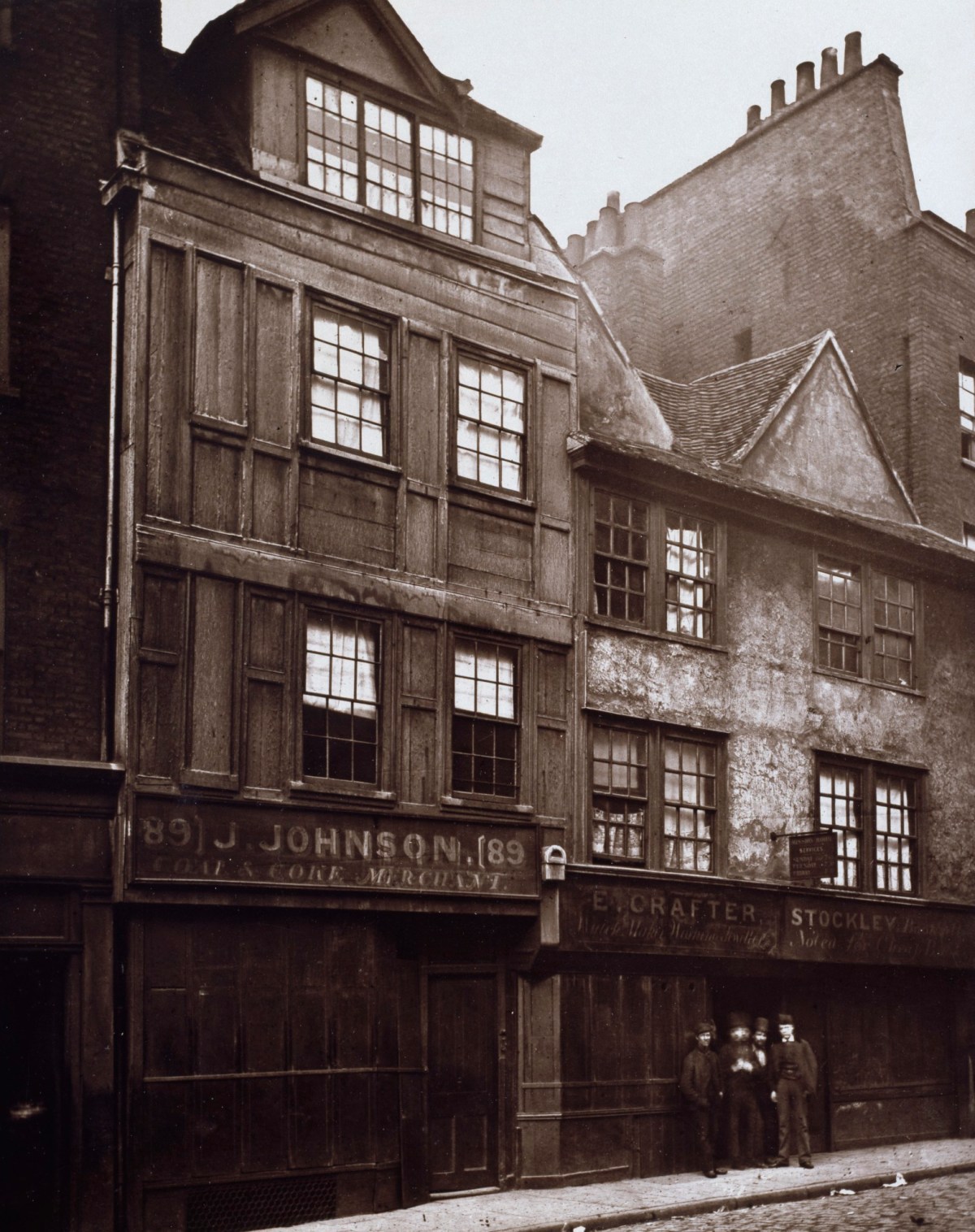
A.& J. Bool, Old Houses in Drury Lane, 1876., ca.1876.
Carbon print mounted on card. 225 mm x 178 mm. © Photo: Royal Academy of Arts, London. Photographer: Prudence Cuming Associates Limited.
This image is not available to download. To licence this image for commercial purposes, contact our Picture Library at picturelibrary@royalacademy.org.uk
Old Houses in Drury Lane, 1876., ca.1876
From: A.& J. Bool
RA Collection: Art
"Nos. 9 & 10. - Old Houses in Drury Lane.
Views from different points of the same houses. That with gables was formerly a public-house, the "Cock and Magpie" (so figured in Archer's Vestiges of Old London), originally the "Cock and Pye." A writer in the European Magazine for 1807, vol 52, p.33, where also an illustration is given, says that the tradition, derived from very old persons, who had long been dead, asserts that this was known as a place for entertainment in the reign of Henry VII. It then looked over fields. Towards the close of the reign of James I., the houses at the upper end of Wych Street began to be built. Probably no part of the existing houses is of an earlier date than the first half of the seventeenth century. The "Cock and Pye" in Drury Lane seems to have been distinct from a public-house with the same sign which gave its name to Cock and Pye fields, the site of Seven Dials (Parton's History of St. Giles in the Fields). According to Mr Douce ( Illustrations of Shakespeare, i.p.473), Master Shallow's oath by "Cock and Pye," and by consequence the tavern sign, had the following origin:-
"In the days of ancient chivalry it was the practise to make solemn vows or engagements for the performance of some considerable enterprise. The ceremony was usually performed during some grand feast or entertainment, at which a roasted peacock being served up by ladies, in a dish of gold or silver, was thus presented to each knight, who then made the particular vow which he had chosen with great solemnity. When this custom had fallen into disuse, the peacock continued nethertheless to be a favourite dish, and was introduced on the table in a pie.....The recollection of the old peacock vows might occasion the less serious or even burlesque imitation of swearing not only by bird itself but also by the pie, and hence the oath, By cock and pie, for the use of which no very old authority can be found."
The above description written by Alfred Marks in 1881, was taken from the letterpress which accompanies the photographs.
Object details
225 mm x 178 mm



